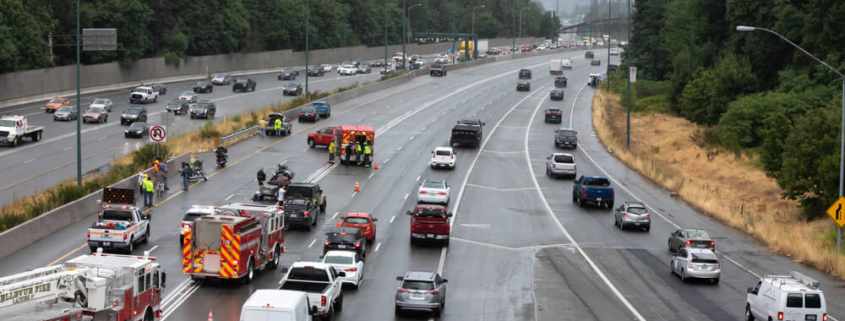Who is at Fault for a Merging Accident?
In most merging accident cases, the motorist who was merging at the time is typically responsible for the crash. However, there are some cases where the merging motorist is not to blame. For instance, if the merging driver struck a vehicle that was speeding, the speeding car could be considered liable for the accident.
It would be deemed that the speeding motorist is responsible as they made it hard for the merging vehicle to gauge the time necessary to merge. But the merging driver is often at fault in most merging collisions. Motor accidents can be very complex and are usually not straightforward. Thus, it is vital to work with a personal injury attorney prior to making a claim.
Injuries Due to Merging Accidents
Merging accidents typically occur when cars merge from a ramp onto a freeway or highway. Such collisions are most likely to occur when the highway is moving fast, but lanes are busy, and many vehicles are attempting to merge.
If a collision occurs between a vehicle traveling at 80 mph and a merging automobile, the crash will likely be devastating for both vehicles. The collision consequences might be even more serious if the freeway is congested.
These accidents can assume a domino effect. The first car that strikes a merging vehicle blocks a lane or gets pushed into an outside lane, which causes more cars to collide into it. The resulting injuries will likely be severe unless the crash occurs in a congested urban area where motor vehicles are moving at slow speeds.
Common reasons for merging accidents include the following:
- Changing lanes without using indicator signals
- Merging onto the highway too fast or very slowly
- Jumping over multiple lanes
- Cutting off other motorists
Merging and Lane Change Collisions
A common cause of merging accidents is unsafe lane changing behaviors. Upon changing lanes, you must ensure that there is a clear path in the traffic for you to safely maneuver your vehicle and change lanes.
Sadly, this is not always the case during a lane change and merging collisions. The liability in such cases often lies with the motorist who is changing lanes, not the driver who is struck by the merging motorist.
To establish that you were not responsible for the merging crash, you need to prove that the other motorist was reckless and at fault for the collision.
Some common acts of negligence in merging wrecks are:
- Inability to use the turn signal to indicate the intent of switching lanes
- Failure to wait until the lane is clear
- Not checking mirrors
- Merging on top of the other motorist
- Not leaving sufficient space between the two automobiles
- Causing a sideswipe crash
If you were involved in a merging collision, you would need to show that the other motorist was negligent and reckless when changing lanes. The other motorist has a duty to change lanes in a safe way, which means that there was a clear path to perform this maneuver.
If the other motorist changed lanes, merged, and struck you without warning in a sudden manner, you could be entitled to collect personal injury damages against the other motorist. Sometimes both drivers could be responsible if they were simultaneously merging and struck one another. Both drivers could also be held responsible if neither had the opportunity to change lanes and merge in a safe manner.
Responsibility in a Merging Accident
In a routine situation, the merging vehicle is responsible as a motorist is legally required to yield the right of way when merging.
However, there are some exceptions to the above. The scenario at hand helps determine who is to blame for a merging accident. A driver could be responsible if they were distracted, aggressive, or careless.
Lane changing is one scenario that may leave you wondering who is to blame for a merging collision. The motorist who enters a lane of moving traffic and strikes another vehicle is always responsible in this scenario. It will not be considered your fault if you were traveling in your lane, and another vehicle enters that lane and collides into your vehicle.
One potential scenario in which the merging motorist may claim not to be entirely responsible for the accident is if the car that was on the highway’s nearside lane was speeding or being driven recklessly.
Irrespective of the actual circumstances of the accident, the evidence concerning who was actually responsible for the accident will be crucial if the drivers or passengers choose to file a personal injury case later on.
Consult a Skilled Mississippi Personal Injury Lawyer for Help
If you or a loved one were injured in a merging car crash, you might be entitled to collect compensatory damages for your lost wages, medical expenses, and pain and suffering. The experienced car accident attorneys at Gardner Law Firm will assess your case and help you receive fair compensation for your injuries and losses. For a free, no-obligation consultation, call our legal team today at (228) 436-6555. We will not charge any upfront fees, and you only need to pay if we recover compensatory damages on your behalf.



